7 Essential William Friedkin Movies (And Where to Watch Them)
- Oops!Something went wrong.Please try again later.
- Oops!Something went wrong.Please try again later.
- Oops!Something went wrong.Please try again later.
- Oops!Something went wrong.Please try again later.
- Oops!Something went wrong.Please try again later.
William Friedkin was, simply put, a legend.
His technical prowess, mastery of tone and commitment to storytelling were unparalleled. And so was his willingness to push the boundaries of what was acceptable. It wasn’t that he was merely challenging good taste; it was that he wanted to go beyond what had come before. And sometimes that made people very uncomfortable. Friedkin’s career is largely defined by this kind of artful provocation, and it makes his passing — especially in the current age of pre-packaged, vacuum-sealed mass entertainment — all the more devastating. We didn’t just lose one of the greatest filmmakers of his generation; we lost an outspoken advocate for the kind of movies they just don’t make anymore.
Thankfully, Friedkin left behind a bounty of modern classics – movies that become richer, more rewarding, and, yes, more provocative, the more times you watch them. Here are seven of his most essential, enduring films, along with where you can watch them.
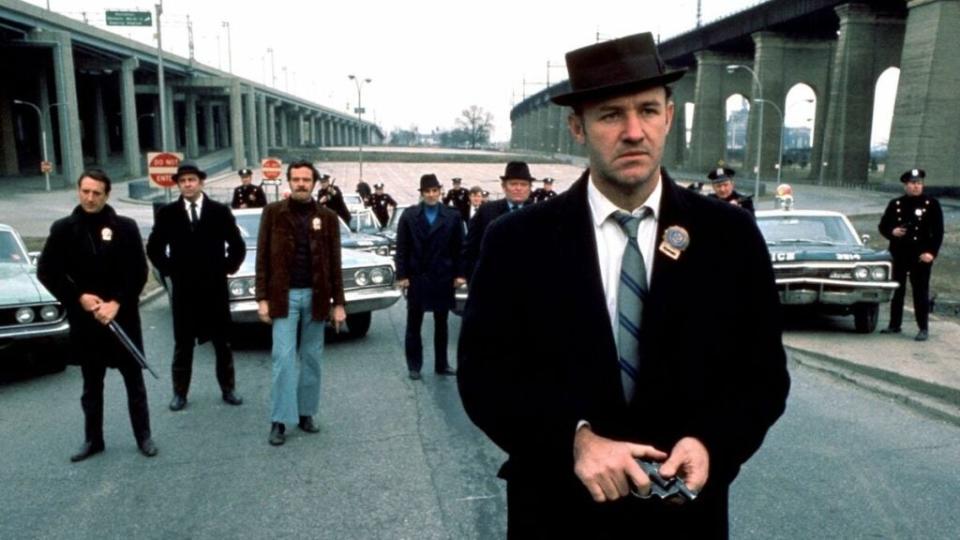
“The French Connection” (1971)
The making of “The French Connection” has taken on its own mythology, but the story (recounted by Todd McCarthy in his Howard Hawks book) goes that, after making a handful of respectable films, Friedkin asked Howard Hawks what he thought of his films. Hawks called Friedkin’s films, up until that point, lousy, and suggested he make something with a good chase. And Friedkin did just that.
“The French Connection,” based on the nonfiction book by Robin Moore, delivered not just a good chase but one of the most thrilling car chases ever committed to film, involving not just cars but an elevated train and filmed on location in Brooklyn.
But “The French Connection” is so much more than a simple chase – it’s an incredible character study, an intricate crime movie (with Gene Hackman and Roy Scheider’s, um, complicated cops looking to squash a heroin smuggling operation) and, at 104 minutes, one of the most propulsive studio movies of all time. Inspired by both his own work as a documentary filmmaker and Costa-Gavras’ international breakthrough “Z,” Friedkin crafted something immediate and almost uncomfortably believable. And, after a handful of films, Friedkin arrived as one of the most exciting filmmakers on the planet. He wasn’t even 40. The movie of course would go on to become an Oscar powerhouse, winning Best Picture, Best Director and Best Actor for Hackman, among others, and is often heralded (correctly) as one of the greatest films of all time. And Friedkin was just getting started.
“The French Connection” is available to rent or buy on every major PVOD platform (Apple TV, Amazon, Vudu, etc).
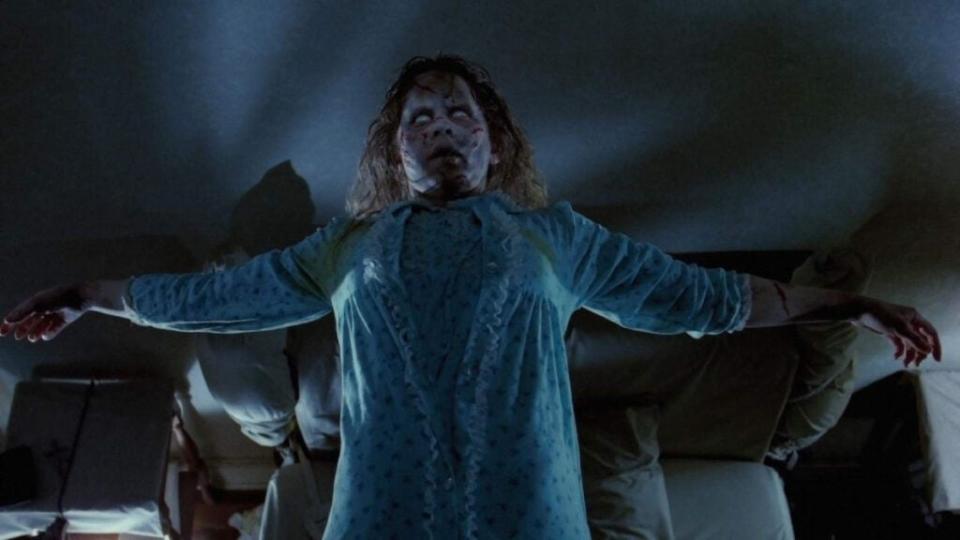
“The Exorcist” (1973)
How do you follow up one of the greatest films of all time? By making another stone-cold classic. What’s fascinating isn’t just that Friedkin was able to follow up “The French Connection” with “The Exorcist,” a movie that was just as complicated (if not more complicated) than the previous movie, but that he wasn’t the studio’s first choice for director — supposedly Warner Bros. had approached Mike Nichols, Arthur Penn and John Boorman, who wound up directing the absolutely bonkers sequel.
Based on William Peter Blatty’s best-selling, based-on-a-true-story novel, Friedkin brought to life what many still consider to be the scariest movie of all time – the story of a young girl named Regan (Linda Blair) who becomes the victim of demonic possession. Unlike the book, which counterbalances the symptoms of possession with alternate explanations, Friedkin leaned in hard to the horror while also establishing the very real setting. Only he could establish an almost cosmic showdown between good and evil in a mild suburban home.
There is so much of the film that remains embedded in the cultural zeitgeist including, among others, Max Von Sydow’s arrival at the MacNeil house to the strands of Mike Oldfield’s “Tubular Bells” and all of the foul things that Regan shouts while enraptured in her demonic possession. The movie would be nominated for a whopping 10 Academy Awards (including Best Picture) and would inspire countless spin-offs and sequels (including David Gordon Green’s upcoming “The Exorcist: Believer,” opening this Halloween). And Friedkin would also be kept under the spell of “The Exorcist,” tinkering with it for a re-release and even making a documentary about the Vatican’s real-life exorcist (2017’s “The Devil and Father Amorth”).
“The Exorcist” is available to rent or buy on every major PVOD platform (Apple TV, Amazon, Vudu, etc). A new 4K disc is coming this fall from Warner Bros. Home Video. You can pre-order it now.
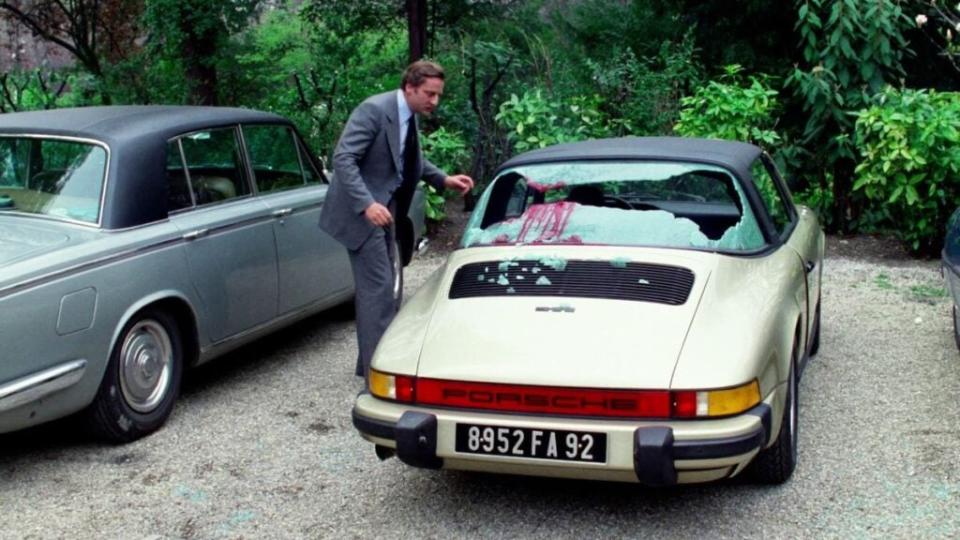
“Sorcerer” (1977)
Perhaps Friedkin’s towering achievement as a filmmaker was, unsurprisingly, ignored at the time of its release. An adaptation of George Arnaud’s 1950 novel “Le Salaire de la peur” (previously made as Henri-Georges Clouzot’s “The Wages of Fear,” a movie Friedkin unsuccessfully lobbied to have re-released in America ahead of his version), it follows a bunch of lowlifes (led by his “French Connection” collaborator Roy Scheider) who convene in South America to drive a truck full of nitroglycerin through the treacherous jungle. By all accounts the actual production was a nightmare (“Easy Riders, Raging Bulls” writer Peter Biskind theorized his rivalry with Francis Ford Coppola was what compelled him to shoot in the actual jungle) and even with the budget being divvied between Universal and Paramount, went overbudget. It was initially designed as a smaller movie with a budget of less than $3 million but quickly ballooned into a more ambitious project with a final budget of $22 million.
“Sorcerer” had the misfortune of opening near “Star Wars” in the summer of 1977, with audiences confused as to why the movie opens with a 16-minute stretch featuring no English dialogue and critics taking a bat to Friedkin following the back-to-back successes of “The French Connection” and “The Exorcist.” (Andrew Sarris in the Village Voice was particularly withering, writing, “What I can swear to is the total pointlessness of the picture.”) In the years since, “Sorcerer” has rightly been reappraised as one of Friekdin’s greatest – if not his single most astonishing – movies. This is the kind of adult-oriented, white-knuckle movie that Hollywood used to make, and everything from its nimble performances and sleek screenplay (by the great Walon Green) to its sublime Tangerine Dream score (throw on “Betrayal” to put some pep in your step) to its gloriously downbeat ending, feel downright miraculous in an age of regurgitated IP. If, for some reason, you never saw “Sorcerer,” it’s time to correct that. Sure, you can sit on the entire seat. But you’ll only need the edge.
“Sorcerer” is available to rent or buy on every major PVOD platform (Apple TV, Amazon, Vudu, etc).
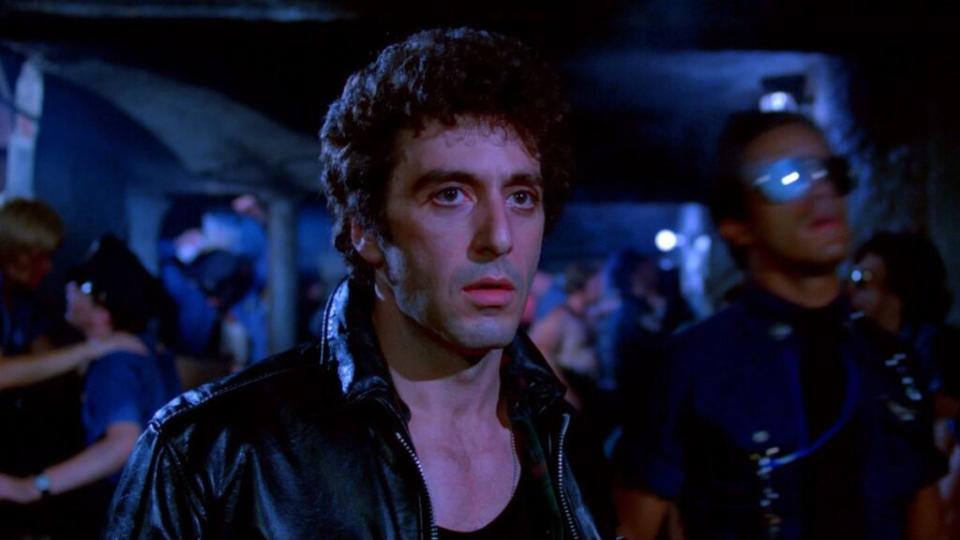
“Cruising” (1980)
One of Friedkin’s strangest and most haunting movies, “Cruising” stars Al Pacino as an NYPD cop who goes undercover to try and solve a series of unsolved killings in the city’s gay community. As you can probably imagine, the idea of Friedkin tackling this kind of material (ostensibly based on Gerald Walker’s 1970 novel “Cruising”) wasn’t widely embraced and protests met the production wherever they were trying to film (the first of many controversies to plague the movie). And, yes, “Cruising” (especially through the lens of 2023) isn’t the most sensitive portrayal of the LGBTQ+ community, especially since at the time there was a real problem with gay men getting killed in New York.
Friedkin largely abandoned the documentary-style approach that made “The French Connection” so effective, instead going for something larger and more heightened. (In many ways this feels like a Brian De Palma movie that Friedkin happened to direct.) He’s largely concerned with how Pacino’s psyche is being transformed by his undercover work, leading to a disquieting final image that has been puzzled over ever since.
When the movie was finished, it was threatened with an X rating and was perceived as being dangerously homophobic (something that carried weight considering the film potentially inspired a real-life hate crime several months after its release) but in the years since it has been reappraised; the original interpretation of the movie was reductive. This is a much more complicated, nuanced movie than people gave it credit for, even with its oversized imagery and sound (Jack Nitzsche’s nightmarish score is perfect). It’s also proven surprisingly influential; there were whole swaths of the last season of “American Horror Story” that were photocopied from “Cruising.”
“Cruising” is available to rent or buy on every major PVOD platform (Apple TV, Amazon, Vudu, etc). Arrow Video also recently put out a special edition Blu-ray that rules.
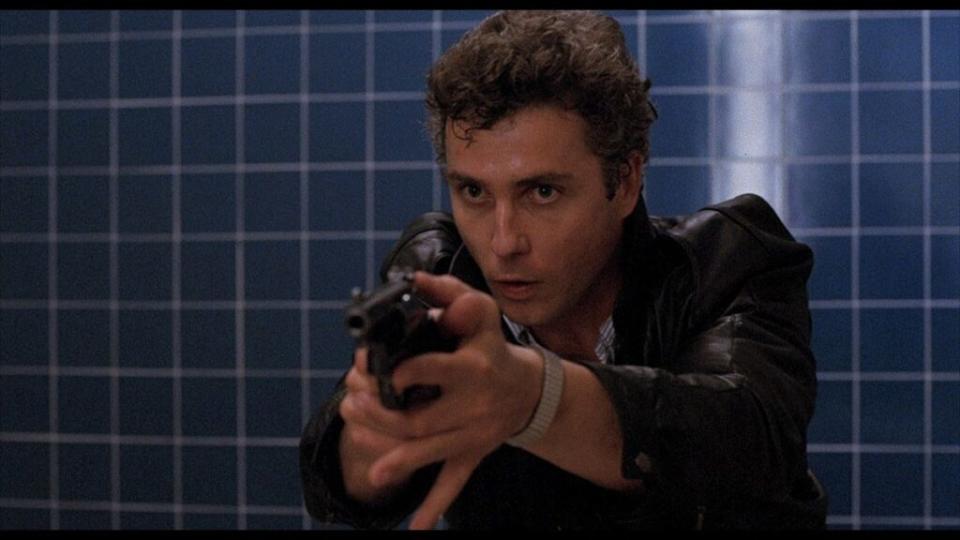
“To Live and Die in L.A.” (1985)
To most, “To Live and Die in L.A.” was an attempt by Friedkin to recapture the cops-and-criminals magic of “The French Connection.” When it was released, even those that liked it saw it as a deliberate return to familiar territory – down to the dazzling, envelope-pushing car chase. But in the years since its release, “To Live and Die in L.A.” has proven itself to be just as complex, challenging and ingeniously made as “The French Connection.”
“To Live and Die in L.A.” is based on the novel of the same name by former Secret Service agent Gerald Petievich (who co-wrote the script by Friedkin), and follows a pair of Secret Service agents – one older and more embittered (William Petersen) and the other more inexperienced and optimistic (John Pankow) – who are hunting down an elusive counterfeiter (Willem Dafoe). Working with regular Wim Wenders collaborator Robby Müller, “To Live and Die in L.A.” looks unlike anything else in Friedkin’s filmography, with colors that border on the hallucinogenic, gamely amplifying the film’s undercurrent of surrealism. And Wang Chung’s electronic score is an all-timer; good luck getting “Wake Up Stop Dreaming” out of your head.
This is Friedkin working at the top of his game, exhibiting the technical mastery and narrative fearlessness (another terrifically depressing ending!) that always defined him, but taking it to a wholly unexpected, unpredictable place. And if somebody says that “To Live and Die in L.A.” isn’t as good as “The French Connection,” please correct them on the matter.
Sadly, “To Live and Die in L.A.” isn’t available to stream (or even to purchase digitally). However, Kino Lorber Studio Classics just put out an eye-popping 4K disc that is nothing short of a must-purchase.
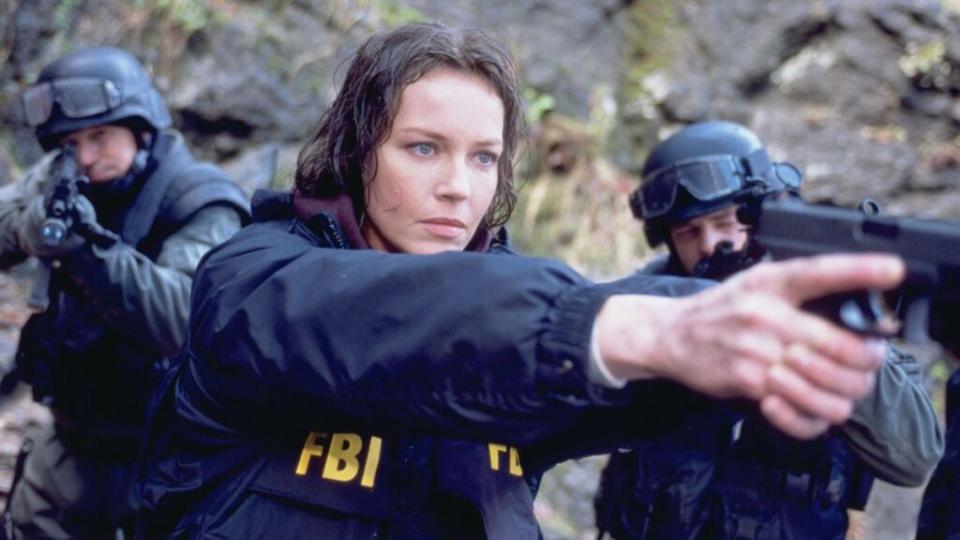
“The Hunted” (2003)
The 1990s weren’t the kindest to Friedkin, with 1990s haunted tree movie “The Guardian,” the interesting but not entirely successful Shaquille O’Neal vehicle “Blue Chips” and the fun Joe Eszterhas erotic thriller “Jade” making for a trilogy of films that were enjoyable and stylish but failed to connect with audiences and critics. In the early 2000s, though, he had a bit of a resurgence with two back-to-back Hollywood thrillers, both starring Tommy Lee Jones (with whom, incredibly, Friedkin had never worked before).
“The Hunted” is the second (and better) movie, a lean, mean, ruthlessly efficient piece of pop entertainment, starring Benicio del Toro as a trailer killer who goes on a rampage and Jones as his former instructor who is tasked with bringing him down. And while that might sound, superficially, like Jones’ earlier, Oscar-winning turn in “The Fugitive,” Friedkin is much more interested in the trauma that produces this kind of violence (while also indulging in some truly staggering bloodshed). And it’s just fun to see Friedkin, by then a seasoned master, make something like this – a big, bold, beautifully photographed (by Caleb Deschanel) and lethally slim (at just 94 minutes) popcorn movie with a lot on its mind. It’s not a towering achievement like some of his other movies but it is tremendous in its own, low-key way.
“The Hunted” is available to stream on MAX, Paramount+ and Cinemax and available to rent or buy on every major PVOD platform (Apple TV, Amazon, Vudu, etc).
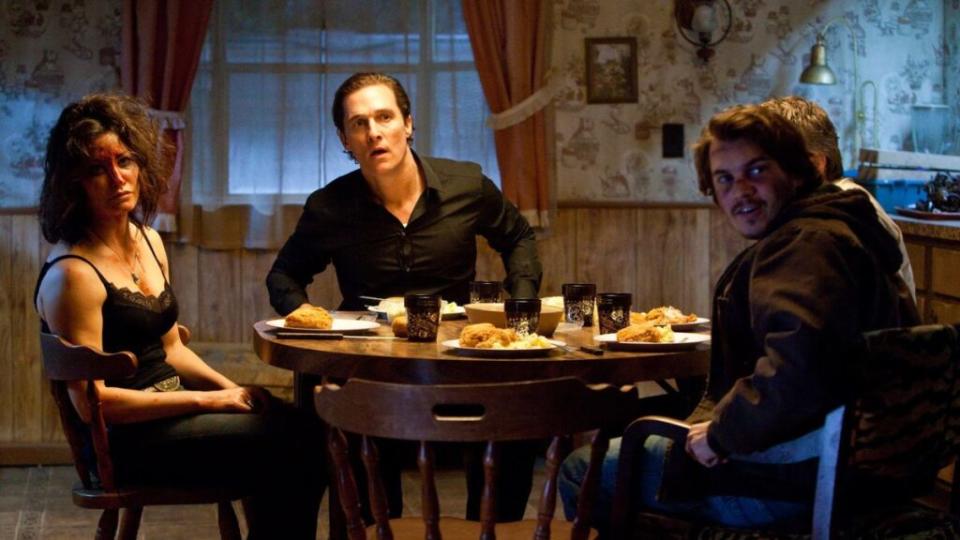
“Killer Joe” (2011)
Three years after “The Hunted,” Friedkin mounted a one-two punch of outrageous Tracy Letts stage adaptations. The first film was 2006’s claustrophobic chamber piece “Bug,” which is excellent. But 2011’s “Killer Joe” is his late-career masterpiece, an NC-17-rated character piece starring Matthew McConaughey as the title character, a police officer who has a side hustle as a hired killer. The play that the movie was based on was written by Letts before he became a critical darling with “August: Osage County;” this is him in full Tennessee Williams territory, with a bunch of very game actors (among them: Thomas Hayden Church, Emilie Hirsch, Juno Temple and Gina Gershon) going all out for the hard-boiled material. (There is an infamous scene that involves McConaughey’s Joe eating fried chicken.) The movie was controversial, for sure (when threatened with censorship Friedkin released a statement comparing the act of editing the movie to the American invasion of Vietnam), and failed to recoup its modest budget, but it was warmly received by critics and proof that Friedkin still had the artistic ability and the general inclination to provoke, challenge and entertaining – three things that his entire career was defined by.
“Killer Joe” is available to stream on Plex and available to rent or buy on every major PVOD platform (Apple TV, Amazon, Vudu, etc).
The post 7 Essential William Friedkin Movies (And Where to Watch Them) appeared first on TheWrap.

